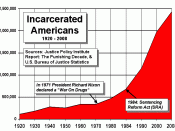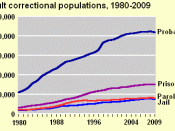It is only in the last 30 years that community corrections have become a substantial part of the correctional system. Beginning in the 1950s, national attention was focused on the development of alternative, community-based correctional services. In the early stages of the community corrections movement, local institutions, residential centers, group homes and specialized probation services were promoted as alternatives to incarceration. In recent years, the push for alternatives to incarceration has, in large part, been in response to rapidly increasing prison populations.
Community corrections can be defined as a set of interrelated programs designed to prevent future criminal activity, by providing opportunities that allow ex-offenders to re-integrate themselves back into society, without compromising public order or safety. Facilities such as Halfway houses, Day Reporting Centers and Halfback houses focus on various forms of counseling to address the needs of ex-offenders. Daily programming include, but are not limited to, educational /vocational training, drug/ alcohol treatment, anger management and conflict resolution.
In addition, community corrections also serve as a remedy to prison overcrowding. For instance, after completing a portion of their prison sentence, parolees are often mandated by the State Parole Board to attend these programs as alternatives to incarceration.
The concept of community corrections is one of rational thinking. In a broad sense, first, the major factors often associated with criminal behavior are identified.(i.e. education, drug addiction, employment). Second, community based programs are then structured with key components that target such factors. Third, offenders on either probation/parole are placed in these facilities, some with specific instructions from the court/parole board, which indicate the type and amount of treatment they should receive. Ultimately, the desired outcome of community corrections is to ensure, that upon completing the program, ex-offenders will be less likely to continue any criminal behavior, thus aiding in crime...



comments
it was a good paper
0 out of 0 people found this comment useful.